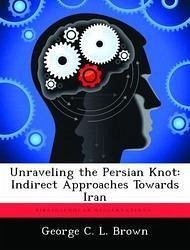In 1979 Ayatollah Khomeini's indirect approach ignited existing socio-economic conditions during the Iranian Revolution to topple the Shah. A similar indirect approach using psychological operations to target audiences through key vulnerabilities and networks may have applicability for strategies today. Joint Pub 5-0 defines the indirect approach as the employment of attacks on an adversary's derived vulnerabilities when conditions do not permit direct attacks against a defined center of gravity (COG). "A COG can be viewed as the set of characteristics, capabilities, and sources of power from which a system derives its moral or physical strength, freedom of action, and will to act." Using a combination of operations, an indirect approach targets the COG by attacking key adversary weaknesses or requirements. When performed successfully, an indirect approach can isolate, sever, defeat, or degrade adversary capabilities to ultimately prevent their use. In the Shah's case, Khomeini focused on Iranian public opinion to degrade the monarch's legitimacy, and also military morale and unity to effectively neutralize the Iranian armed forces. Ayatollah Khomeini effectively unified various Iranian opposition groups through a common hatred and desire to overthrow the Shah. Most significant, the Ayatollah accomplished this while residing entirely outside Iran's borders using psychological operations as the primary arm of his approach. Joint doctrine defines psychological operations as, "planned operations to convey selected information and indicators to foreign audiences to influence the emotions, motives, objective reasoning, and ultimately the behavior of foreign governments, organizations, groups, and individuals." Often misunderstood, psychological operations require sufficient time in order to work but given appropriate time the effects can often be dramatic. Khomeini's synchronization of psychological operations with coordinated internal political violence successfully de
Hinweis: Dieser Artikel kann nur an eine deutsche Lieferadresse ausgeliefert werden.
Hinweis: Dieser Artikel kann nur an eine deutsche Lieferadresse ausgeliefert werden.








